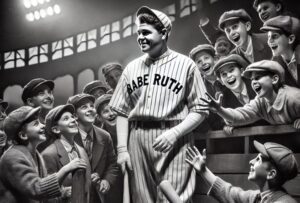In a playing career spanning two decades in the 19th century, Deacon White was a fine hitter and defensive player at both catcher and third base. He won two batting titles, one in the National Association, the other in the National League. When he retired he held many of the all-time marks in the baseball record book, though they were eclipsed in the decades that followed.
White is credited with collecting the first hit in professional major league baseball, though that may not be completely accurate. He was however, one of the most respected and famous players in the National Association and subsequent National League. His membership in the NL lent a respectability to the fledgling league.
In his early days, White was a great catcher, playing the position several feet behind home plate, as was the custom at that time. Later, White transitioned to third base, where his great throwing arm continued to be an asset.
Throughout his career, White played on some of the most successful and powerful teams of the 19th century. When he played for the Buffalo Bisons he was part of baseball’s “Bifg Four” along with teammates Dan Brouthers, Jack Rowe, and Hardy Richardson. White was a key part of the 1887 Detroit Wolverines, who also won a NL flag.
As a batter, White hit for a high average and drove the balls to the gaps. He led his league in runs batted in three times, and was consistently among leaders in slugging and on-base percentage.
White was a devout man and a serious man who was respected by nearly everyone he came in touch with. As a result he had great influence on events in the 1880s when professional baseball was trying to establish a set of rules and a structure. White was instrumental in forming the Players League, which helped in a small way to bring more equitable pay and benefits to players.
A thorough history of the early days of organized baseball would be incomplete without an analysis of the career and contributions of White. For that reason, as well as his obvious talents with a bat and in the field, it’s difficult to understand why White has not been selected to the Hall of Fame. He has been on various veterans or old-timers ballots in the past, but voters have failed to recognize his deserving status.
Of all of the candidates on the Pre-Integration Era ballot, White is most deserving. He was a great player, and a significant figure in the history of baseball in the 19th century.






